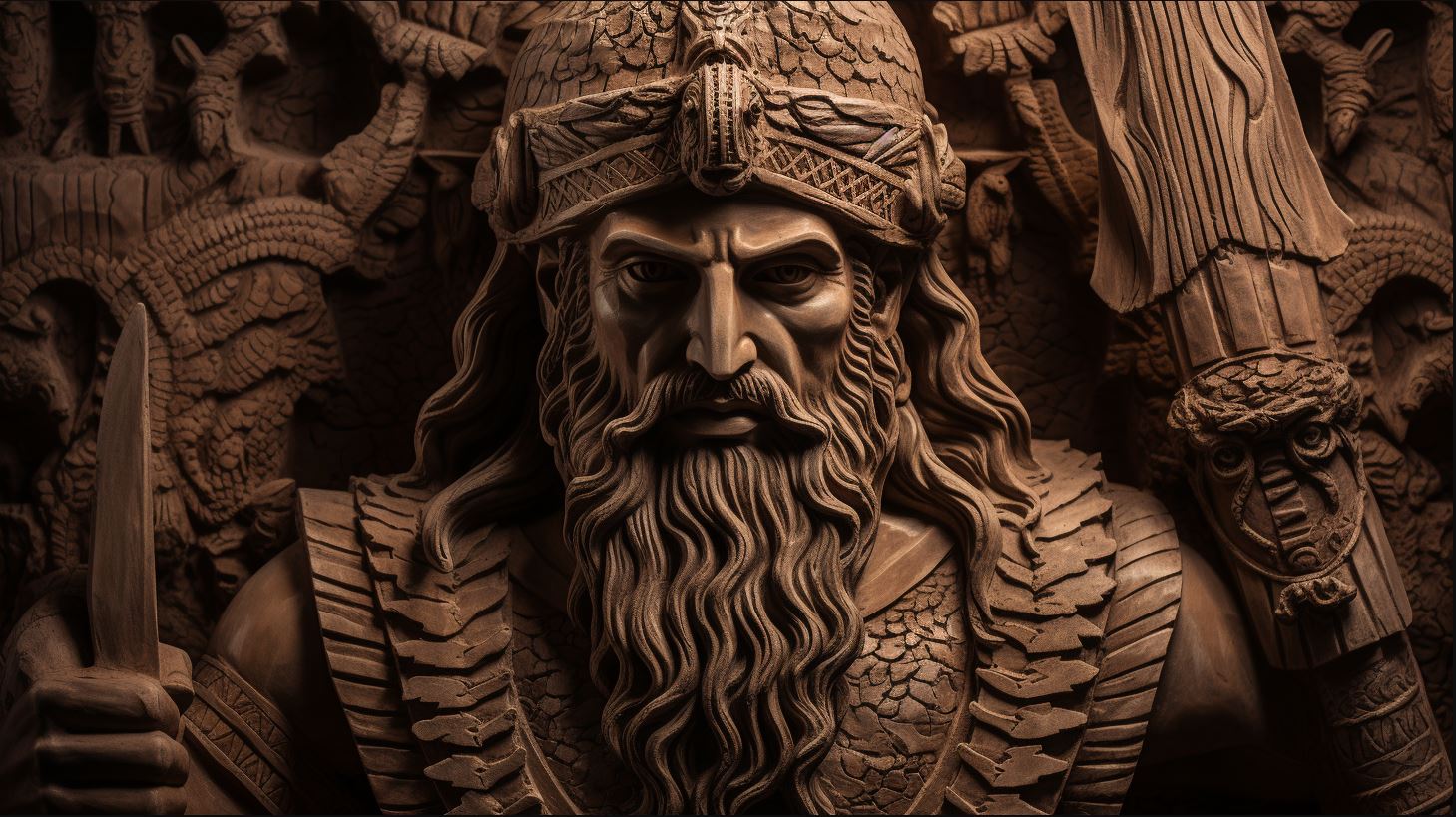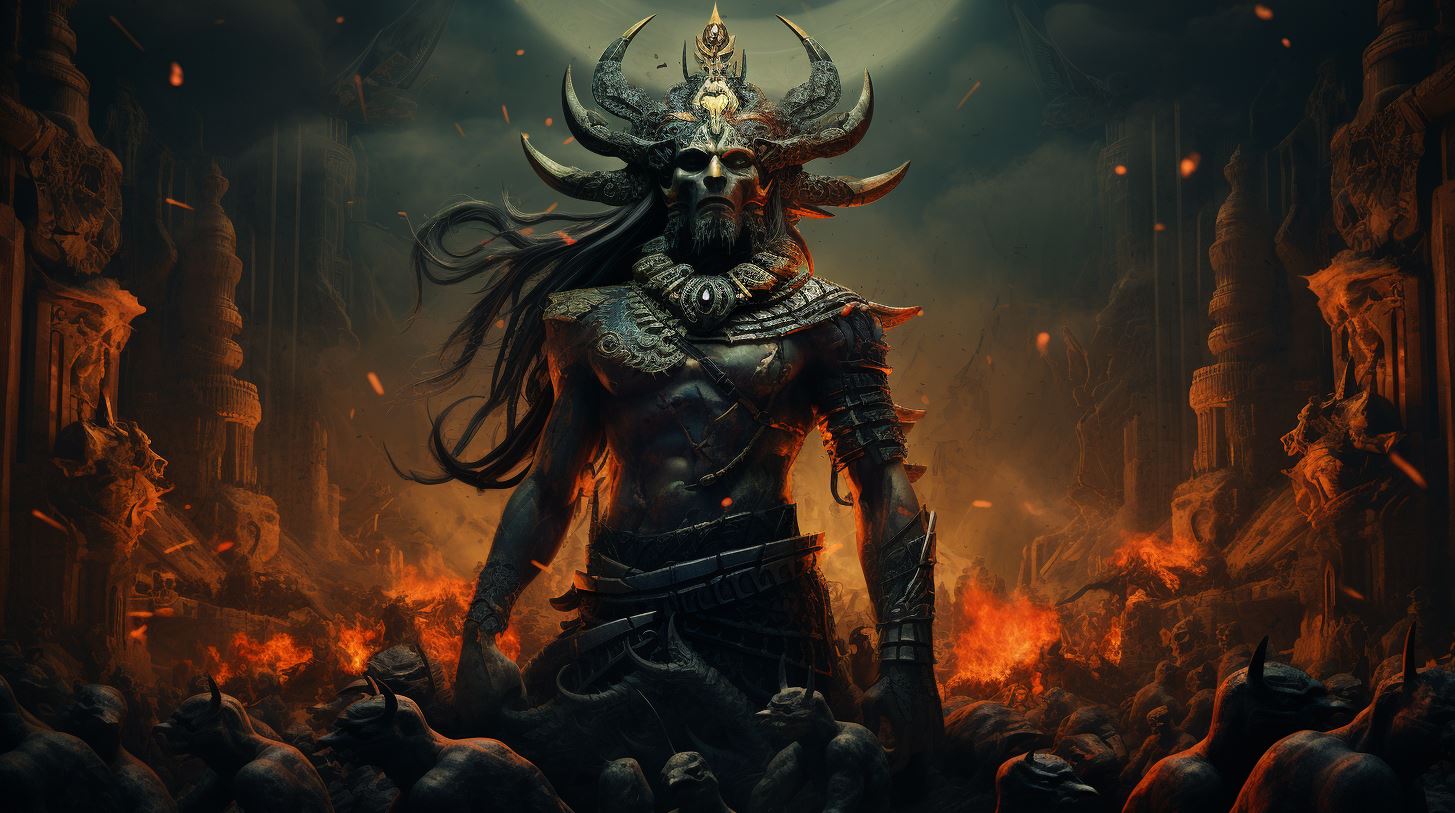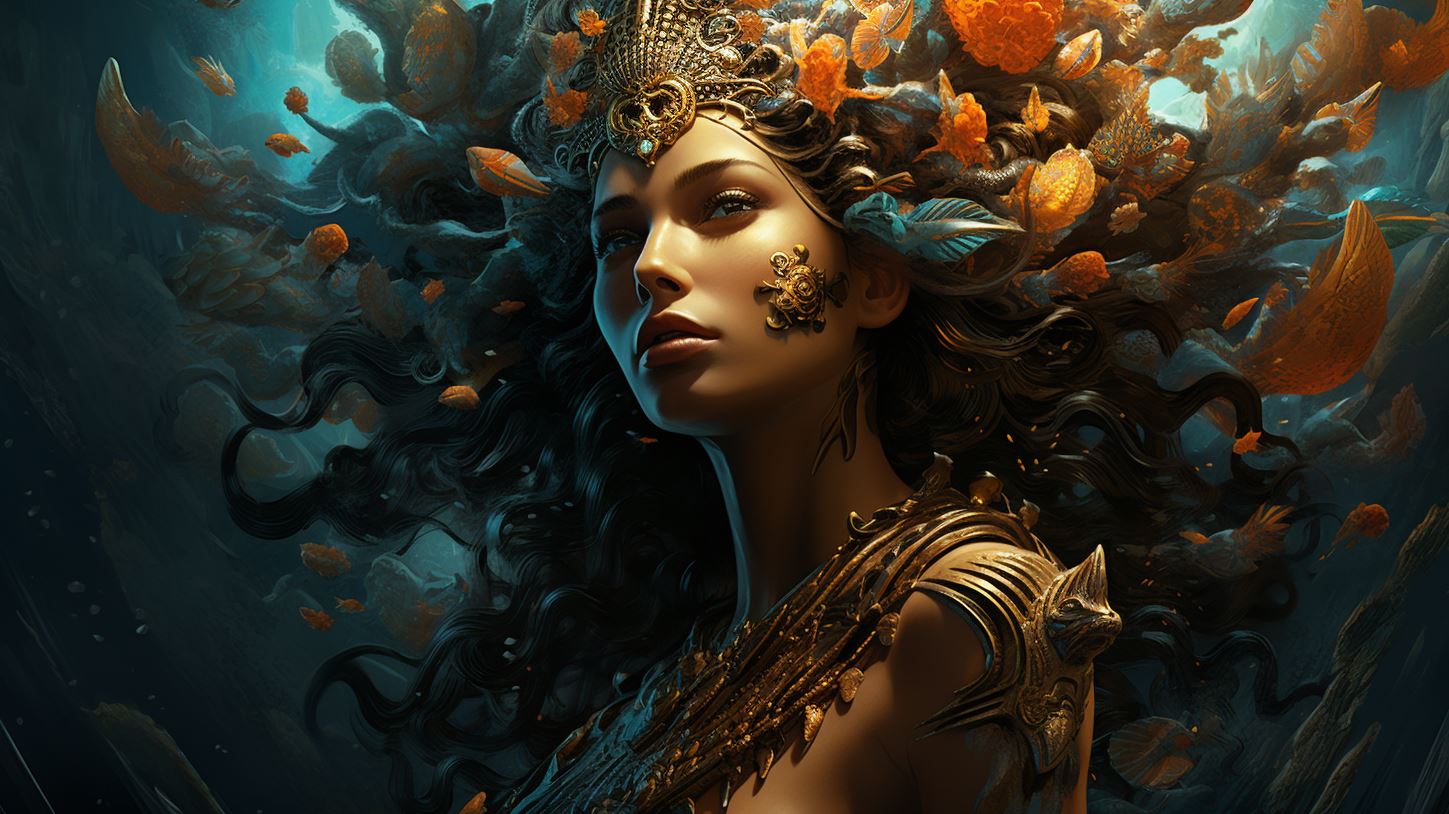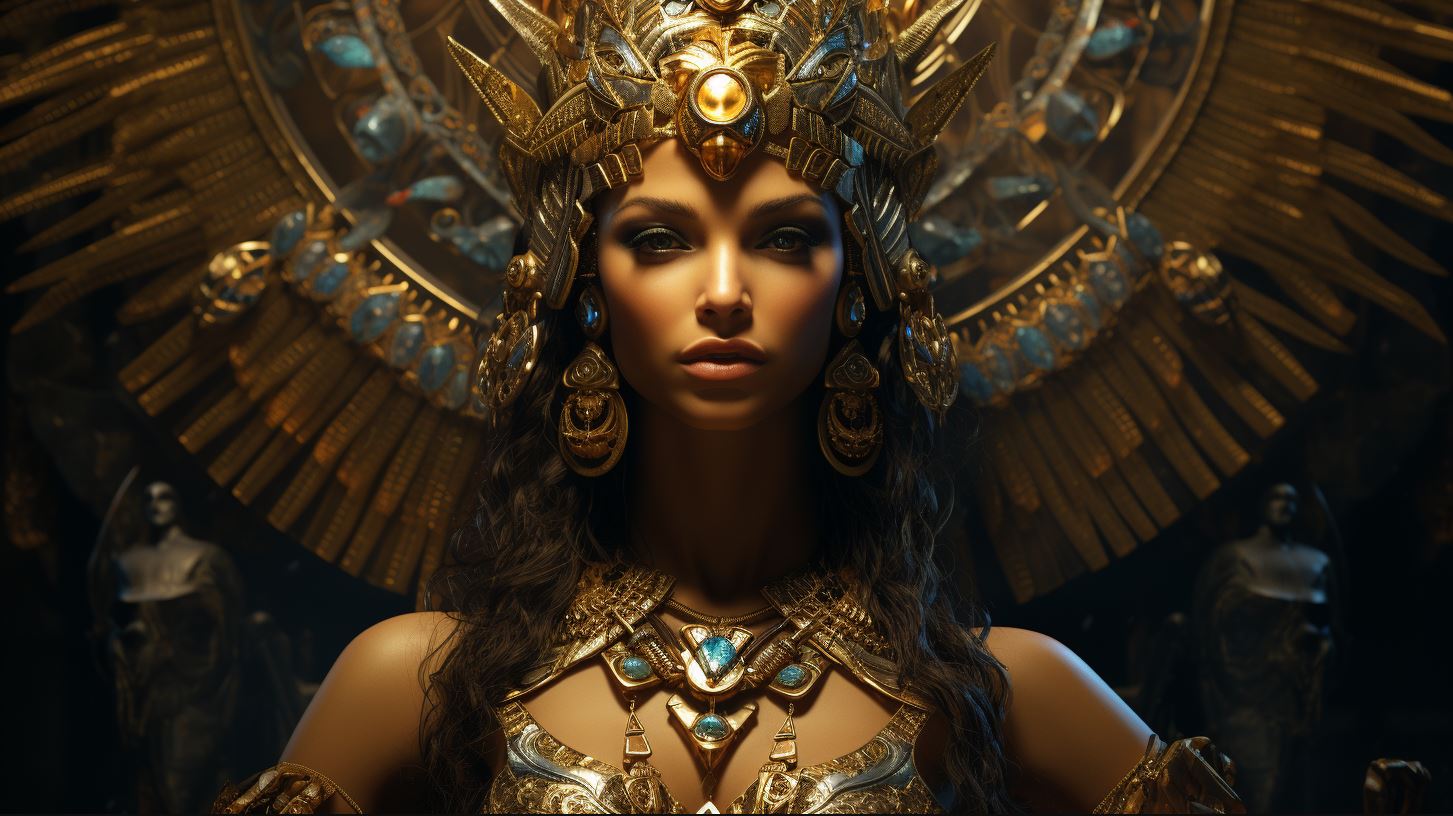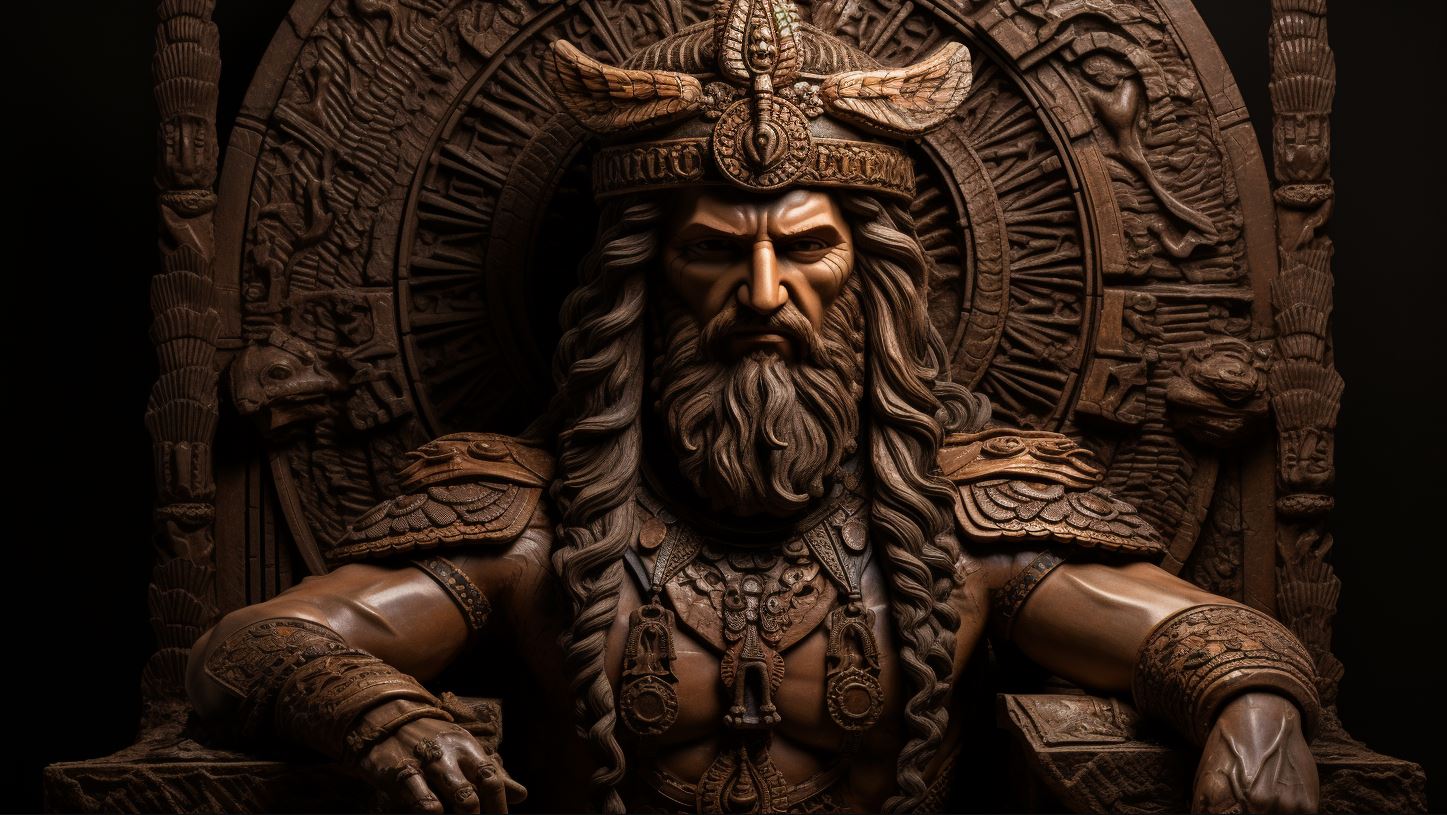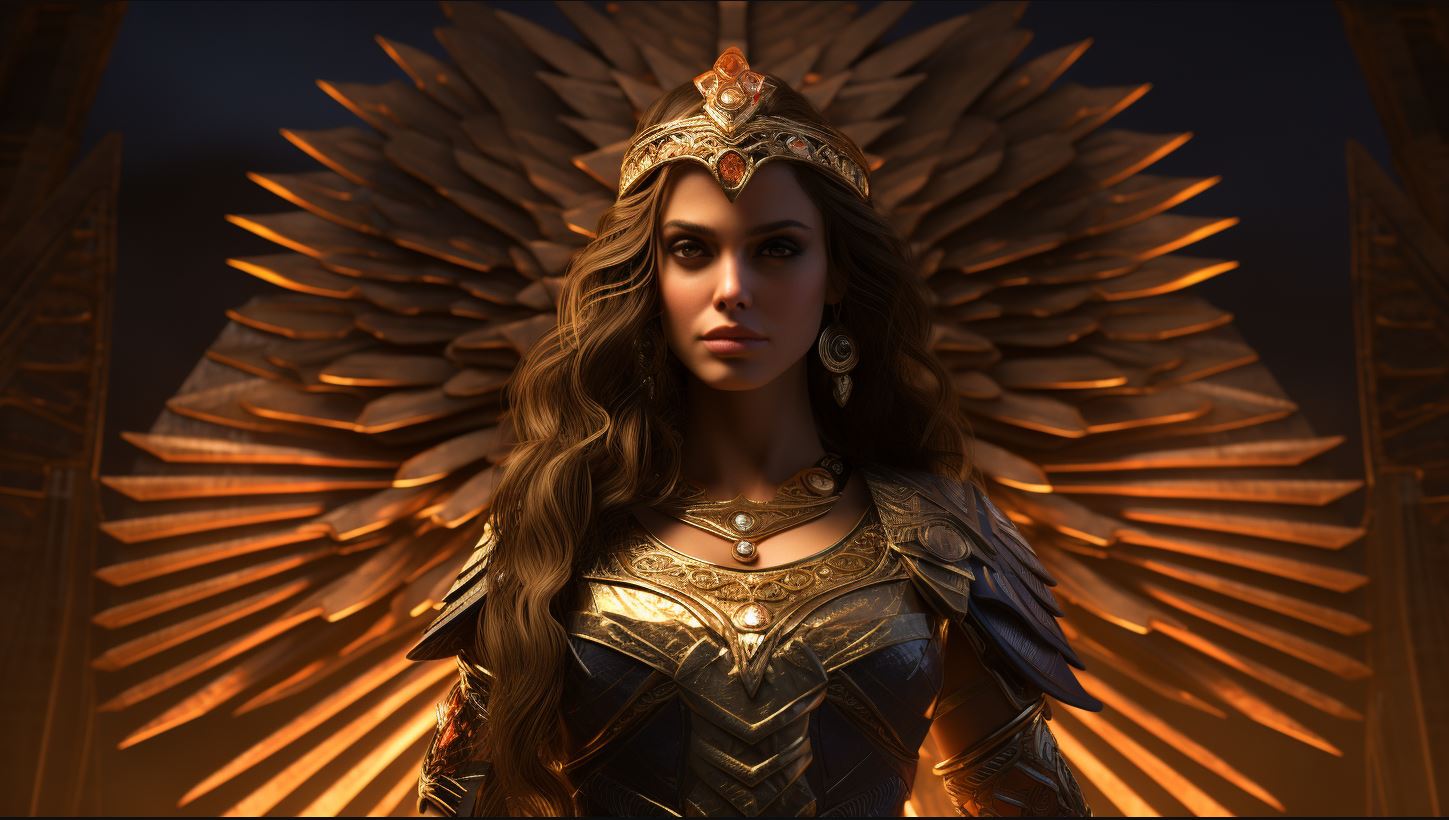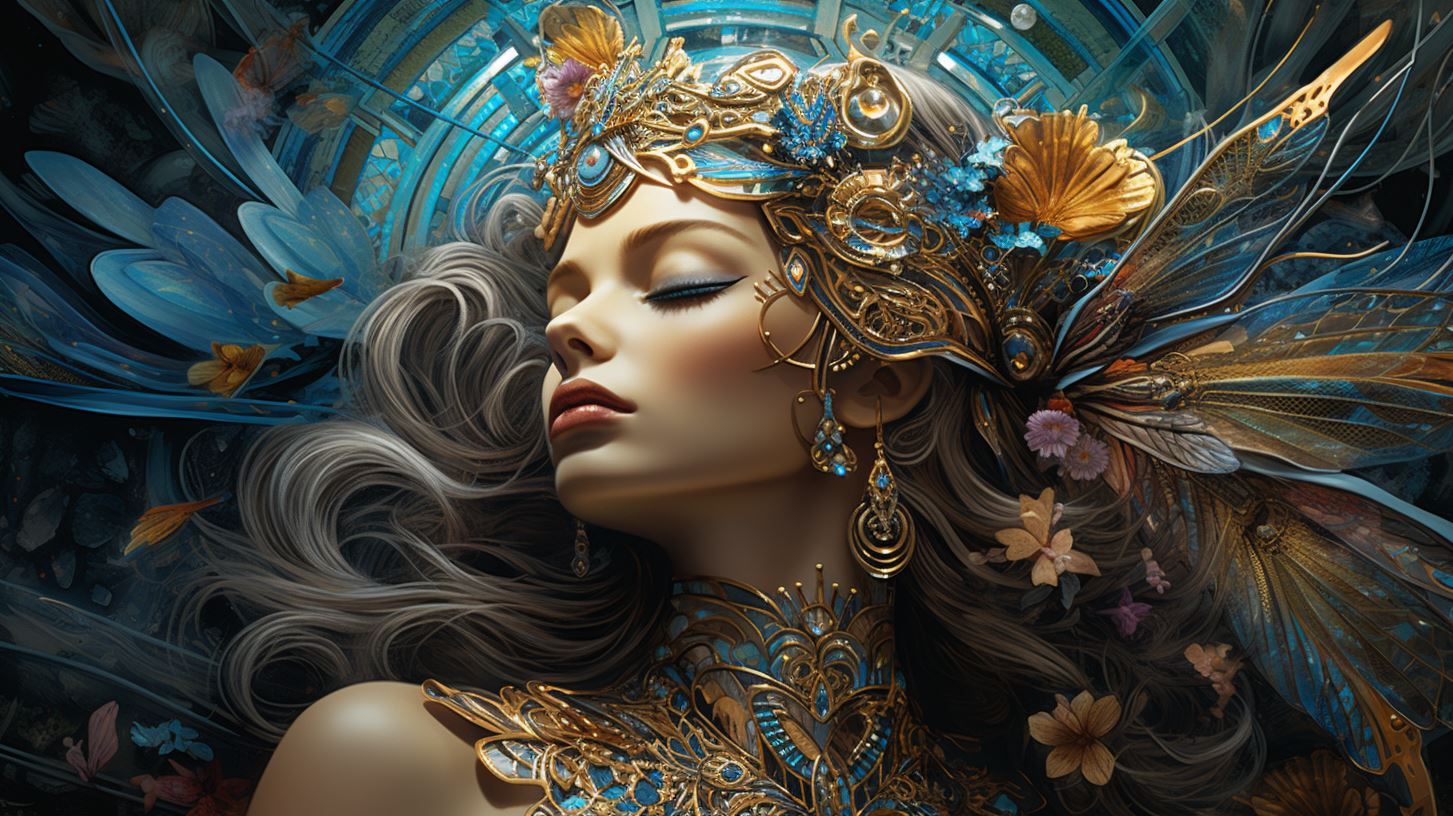Ninazu God: Unveiling the Mesopotamian Deity’s Realm of Divine Healing and Power
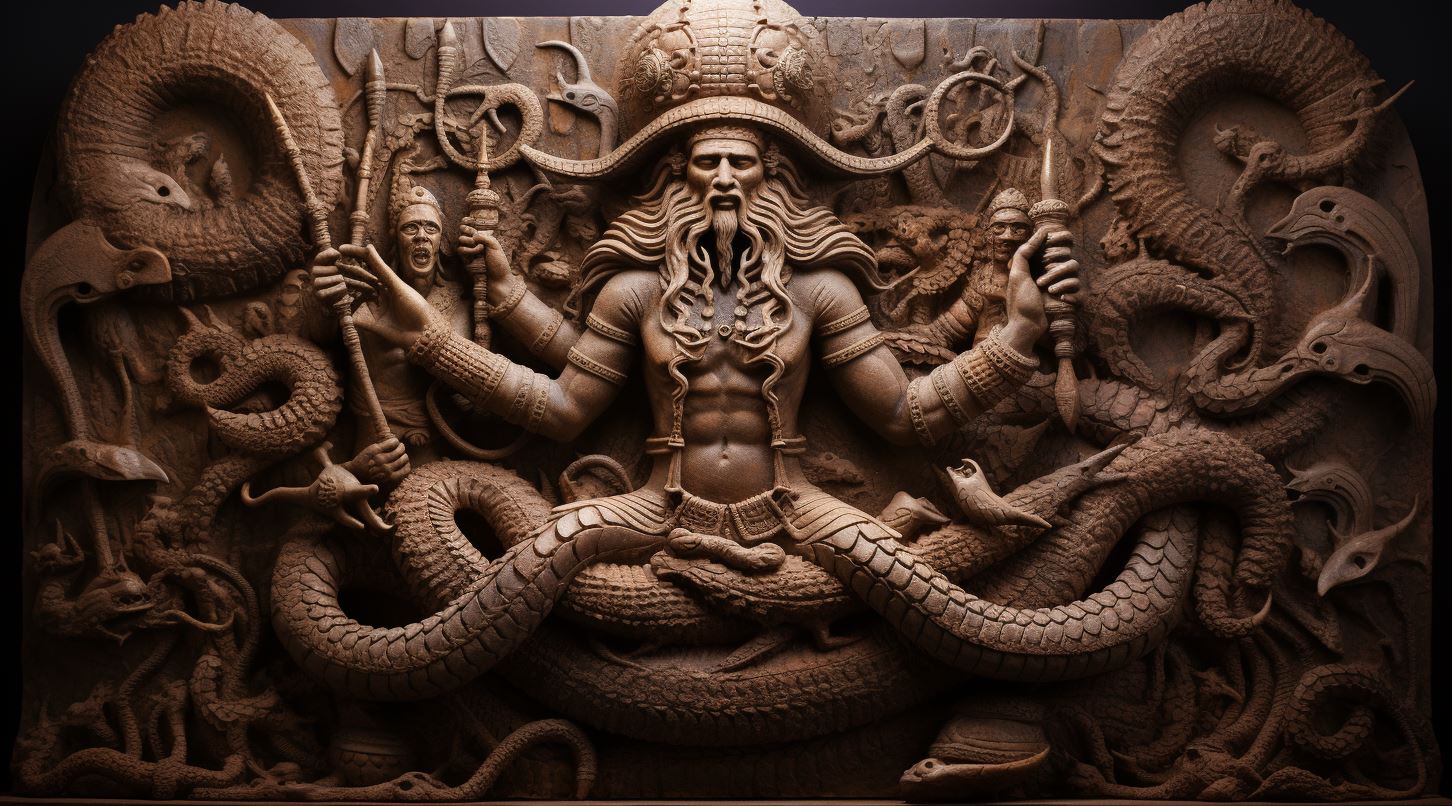
Ninazu god, a prominent deity in ancient Mesopotamian beliefs, held associations with healing, serpents, vegetation, and warfare. Different accounts trace his lineage, often considering him the son of Ereshkigal or Enlil. As the “lord of healing,” Ninazu was invoked against snakebites and depicted as the ruler of serpents.
He was also associated with agriculture and played a role in setting boundaries in fields after floods. Worshipped in the temples of Enegi and Eshnunna, Ninazu’s cult continued in Ur even after the decline of other Mesopotamian empires.
His influence permeated art and connected with other deities.
The Origins and Genealogy of Ninazu
Ninazu, the Mesopotamian deity associated with various aspects including healing, serpents, vegetation, and warfare, has an intriguing genealogy that is the subject of different accounts and interpretations. This section explores the diverse narratives surrounding the parentage of Ninazu and examines the deity’s connection with prominent Mesopotamian figures such as Ereshkigal and Enlil.
Different Accounts of Ninazu’s Parentage
Various Mesopotamian sources present distinct versions of Ninazu’s parentage, leading to a certain level of ambiguity and multiple interpretations.
These accounts provide insights into the complex nature of the deity and shed light on the interconnectedness of Mesopotamian mythological narratives.
Connection with Ereshkigal and Enlil
One prevalent account establishes Ninazu as the son of Ereshkigal and the Great Lord, or alternatively, as the offspring of Enlil and Ninlil. These genealogical ties connect Ninazu with significant deities in Mesopotamian mythology, highlighting his divine lineage and positioning within the pantheon.
Ninazu’s Attributes and Associations
Ninazu, the Mesopotamian deity, possessed various attributes and had significant associations within the ancient pantheon. This section explores Ninazu’s distinguishing characteristics and his connections with healing, serpents, and agriculture.
Ninazu as the Lord of Healing
Ninazu was revered as the ‘Lord of Healing’ and held great importance in ancient Mesopotamian beliefs regarding physical well-being.
Devotees turned to Ninazu for protection against ailments and sought his aid in times of sickness. The deity’s role in curing diseases and warding off illnesses elevated his status within the realm of Mesopotamian deities.
Symbolism of Serpents: Ninazu as the King of Snakes
One of the prominent associations of Ninazu was his strong connection to serpents. Often referred to as the ‘King of Snakes,’ Ninazu symbolized the power and influence of these enigmatic creatures in Mesopotamian culture.
The intertwining of Ninazu’s persona with serpents suggests a deeper understanding of their significance in ancient beliefs, possibly representing regeneration, wisdom, and transformative powers.
Association with Vegetation and Agriculture
In addition to healing and serpents, Ninazu was also associated with vegetation and agriculture. As an important deity of the pantheon, Ninazu played a role in the growth and prosperity of crops, ensuring bountiful harvests for the Mesopotamian people.
This connection to agriculture exemplified the deity’s role in sustaining and supporting the livelihoods of communities in ancient Mesopotamia.
Overall, Ninazu’s attributes encompassed his role as the ‘Lord of Healing,’ his symbolic association with serpents as the ‘King of Snakes,’ and his significance in the realm of agriculture and vegetation within Mesopotamian beliefs.
These aspects highlight the diverse nature of Ninazu’s influence and his importance in the lives of ancient Mesopotamian communities.
The Cult of Ninazu
The worship of Ninazu, the Mesopotamian god associated with the underworld, serpents, vegetation, and warfare, was deeply ingrained in the religious practices of the ancient civilizations. This section explores the significance of temples dedicated to Ninazu, as well as the decline and continuation of his worship in different regions.
Temples of Worship: Enegi and Eshnunna
Enegi and Eshnunna were prominent cities where the cult of Ninazu thrived, with dedicated temples serving as centers of worship. These sacred sites were adorned with intricate artwork and elaborate rituals, underscoring the importance and reverence accorded to Ninazu.
Note: Elaborating on the specific practices, rituals, and architectural features of these temples can provide a richer understanding of the cult of Ninazu. Additionally, exploring the role of priests and their involvement in these religious ceremonies can further enhance the narrative.
Decline and Continuation of Worship in Ur
Despite the decline of Mesopotamian empires, the worship of Ninazu endured in the city of Ur. Devoted followers, undeterred by the tides of change, kept the flame of devotion alive. The persistence of worship in Ur underscored the lasting impact of Ninazu on the religious landscape of the region.
Note: Discussing the reasons behind the decline of Ninazu’s worship in other parts of Mesopotamia and emphasizing the factors contributing to its continuation in Ur can provide valuable historical context and insights into the evolving religious beliefs and practices of the time.
Conclusion
In conclusion, the cult of Ninazu manifested in dedicated temples in Enegi, Eshnunna, and Ur. These centers of worship upheld the reverence for Ninazu, solidifying his significance as a deity associated with healing, serpents, vegetation, and warfare.
The decline and continuation of his worship were influenced by various historical and cultural factors, leaving behind a legacy that showcased the enduring impact of Ninazu in Mesopotamian beliefs and practices.
Ninazu’s Role in Mesopotamian Beliefs and Practices
Ninazu played a significant role in the ancient Mesopotamian belief system, with his influence extending to various aspects of life and spirituality. Let us delve into the two key aspects of his role: involvement in the underworld and afterlife, and his influence on warfare and protection.
Ninazu’s Involvement in Underworld and Afterlife
Within Mesopotamian cosmology, Ninazu held a crucial position in the realm of the underworld and afterlife. The belief was that upon death, individuals would traverse through the various realms of the afterlife, ultimately reaching the underworld.
Ninazu was considered a guide and protector of the souls during this journey, ensuring their safe passage and appropriate placement within the afterlife hierarchy.
His connection to Ereshkigal, the goddess of the underworld, further solidified his role in this domain.
The interplay between Ninazu and Ereshkigal highlighted the intricate relationship between life and death, reaffirming Ninazu’s position as a divine intermediary.
Influence on Warfare and Protection
Ninazu’s association with warfare bestowed upon him the ability to influence battles and safeguard his devotees. Warriors sought his favor and invoked his assistance in crucial battles, seeking his protection from harm and his guidance in gaining victory over their enemies.
Furthermore, Ninazu’s role in offering healing and protection against snakebites extended to the battlefield. Soldiers would call upon his power to shield them from venomous creatures and to heal any injuries suffered in combat.
His divine influence in warfare and protection permeated the ancient Mesopotamian society, providing not only physical safeguarding but also a sense of spiritual security and reassurance in times of conflict.
Conclusion
In conclusion, Ninazu’s influence in Mesopotamian beliefs and practices encompassed various aspects, including his involvement in the underworld and afterlife, as well as his role in warfare and protection.
As individuals embraced his power, they found solace in his guidance, sought healing from his realm, and revered him as a powerful deity who played a significant part in their lives.
Ninazu’s Legacy and Influence
Ninazu, the Mesopotamian deity associated with the underworld, serpents, vegetation, and warfare, left a profound legacy that influenced various aspects of ancient Mesopotamian culture. Through depictions in art and connections with other deities, Ninazu’s presence endured for centuries, shaping religious beliefs and practices.
Representation in Art and Iconography
Artistic representations of Ninazu provided visual symbolism of his divine attributes and powers. Depicted as a serpent or a humanoid figure with serpent features, Ninazu’s iconography prominently featured the snake-dragon mushussu, a symbol of his authority as the ‘king of snakes.’
In Mesopotamian art, Ninazu was often portrayed holding or surrounded by healing plants, emphasizing his role as the ‘lord of healing.’ These depictions aimed to convey his ability to cure ailments and protect against venomous snake bites.
Sculptures and reliefs in temples showcased Ninazu’s connection with agriculture and fertility. Often depicted alongside his brother, Ninmada, Ninazu was portrayed as bringing barley and flax to humanity, symbolizing his association with the growth of crops and the well-being of agricultural communities.
Comparisons and Connections with Other Mesopotamian Deities
Within the Mesopotamian pantheon, Ninazu held relationships and connections with other deities, further shaping his legacy and influence. One significant connection was with Ereshkigal, the goddess of the underworld, who was sometimes referred to as Ninazu’s spouse.
This association emphasized Ninazu’s role in the realm of death and afterlife.
Ninazu’s lineage also linked him to Enlil and Ninlil, prominent gods in Mesopotamian mythology. As their son, Ninazu inherited aspects of their powers and authority, becoming a vital figure in the divine hierarchy.
Furthermore, Ninazu’s prominent presence in the cities of Enegi and Eshnunna highlighted the regional variations in his worship and cult development. While he held a central role in these temples, his influence eventually gave way to other deities like Tishpak.
In conclusion, Ninazu’s legacy and influence in ancient Mesopotamian culture were evident through his representations in art, his associations with other deities, and his role in shaping religious beliefs and practices.
The visual symbolism surrounding Ninazu and his connections with underworld realms, healing, and agriculture solidified his position as a significant deity in the Mesopotamian pantheon.
.











